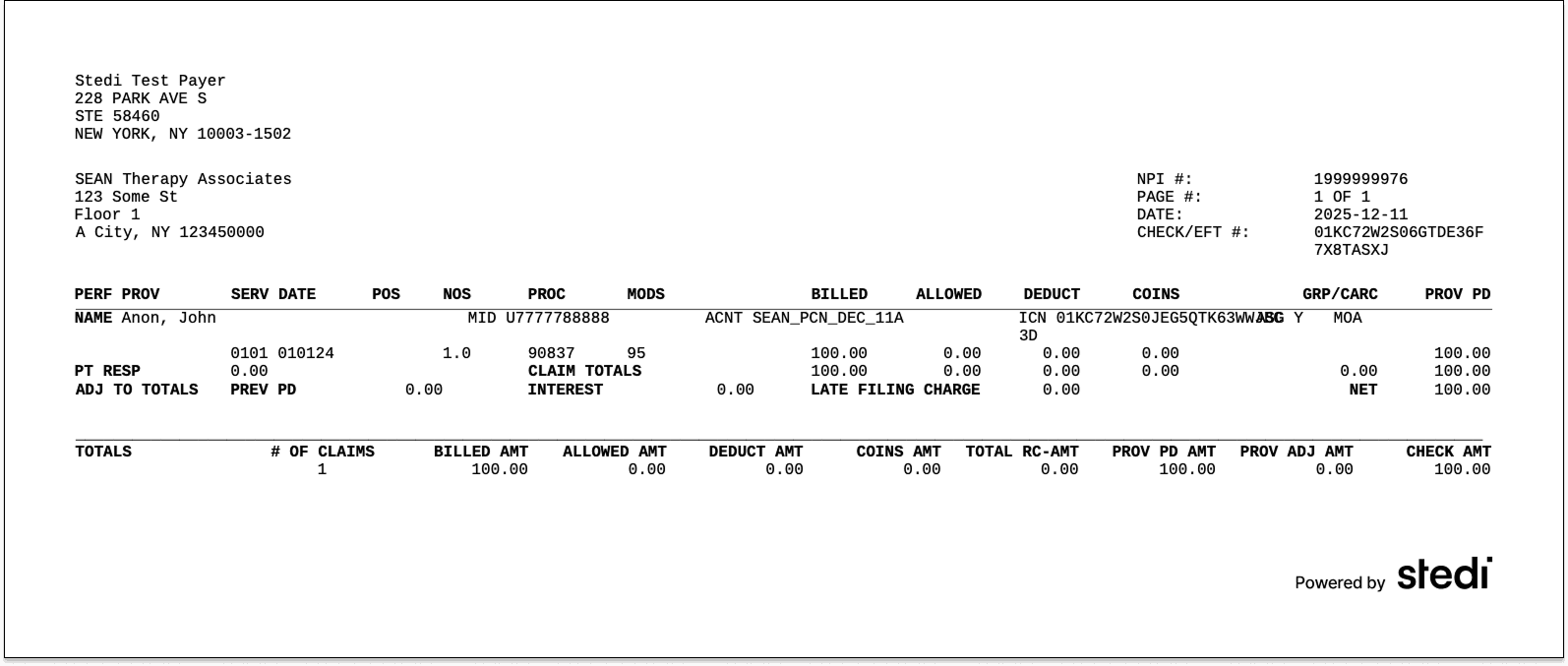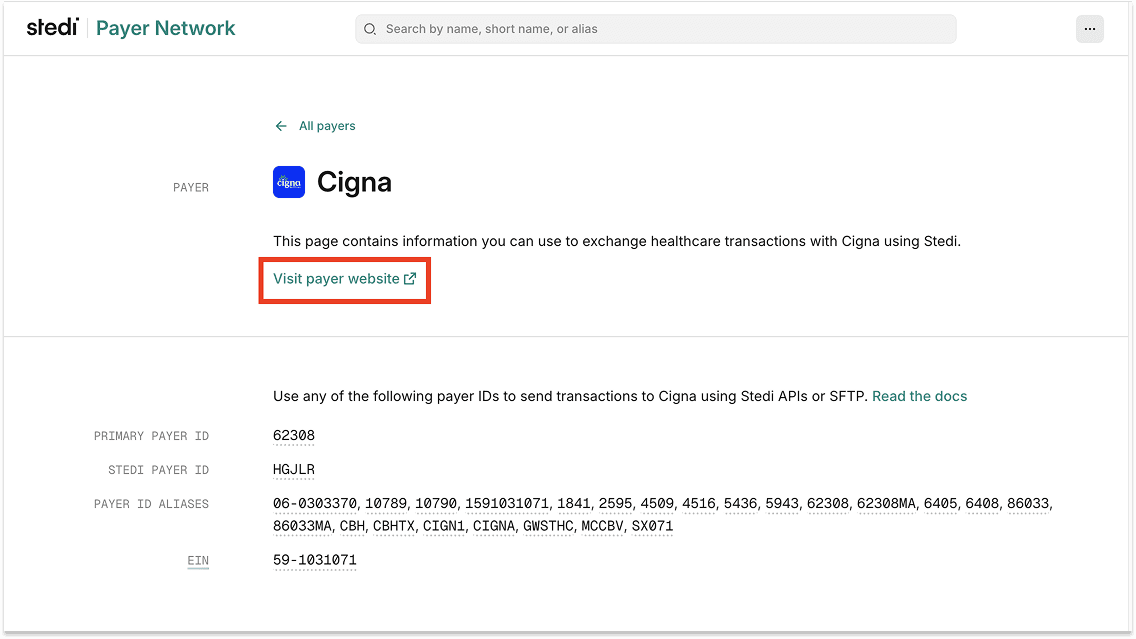Changelog
Subscribe to email updates
Trusted by the fastest-growing healthtech companies
Dec 19, 2025
You can now programmatically retrieve PDF versions of your 835 Electronic Remittance Advice (ERAs) using Stedi’s new ERA PDF API endpoint. The {transactionId} path parameter is the ERA's transaction ID.
By default, the endpoint returns the PDF as a base64-encoded string. To get the unencoded PDF data, include the Accept: application/pdf request header. To view the PDF, save the PDF data to a file with a .pdf extension.
The PDFs are the same as the ones you can download from the Stedi portal:

For more, check out our announcement blog or the API reference.
Dec 19, 2025
Horizon Blue Cross Blue Shield of New Jersey (Payer ID: 22099) now supports one-click transaction enrollment for Electronic Remittance Advice (ERAs).
What is transaction enrollment?
Transaction enrollment is the process of registering a provider to exchange specific healthcare transactions with a payer. Payers always require transaction enrollments for ERAs.
You can submit and track enrollments using Stedi's transaction enrollment API, the Stedi portal, or a bulk CSV.
One-click enrollment
Enrollment requirements vary by payer. Some payers may require the submitter to sign PDFs or complete tasks in the payer's portal.
If a payer supports one-click enrollment, you only need to submit the enrollment request. There are no follow-up steps. Stedi handles everything else.
You can check whether a payer requires enrollment – and supports one-click enrollment – for ERAs and other transaction types using the Stedi Payer Network or the Payer APIs.
For details, see our transaction enrollment docs.
Dec 18, 2025
You can now upload documents required for transaction enrollment requests directly in the Stedi portal. Only PDF documents are supported.
What is transaction enrollment?
Transaction enrollment is the process of registering a provider to exchange specific healthcare transactions with a payer.
For 835 Electronic Remittance Advice (ERAs), enrollment is always required. A payer only sends ERAs to the clearinghouse the provider has enrolled with, and a provider can only enroll with the payer through one clearinghouse at a time.
Stedi offers fully-managed, API-based transaction enrollment. You can use Stedi’s enrollment API to programmatically submit and track enrollments for providers. You can also use the Stedi portal, which supports bulk CSV imports.
When possible, we handle all enrollment paperwork on your behalf. When we can’t, we let you know what’s needed next.
Upload required enrollment documents
Enrollment requirements vary by payer. Some payers require additional documents, such as:
A signed form
A practice W9
A voided check
Previously, Stedi emailed you to request these documents and asked you to email them back to us.
With this update, we’ll still email you when an enrollment requires action. But, now, you can upload completed documents by clicking Upload new document in the Documents section of the enrollment’s details page in the Stedi portal.

The new upload functionality is available for all Stedi plans, including our free Basic plan.
For more information, see our documentation.
Dec 16, 2025
You can now get a payer’s website URL using the Stedi Payer Network and the Payers API.
Stedi payer records now list the payer’s website URL, when provided.
View payer URLs in the Stedi Payer Network
Each payer now includes a Visit payer website link, when available in the payer’s record, in the Payer pane:

The Payer page also includes the link:

Retrieve payer URLs using the Payers API
All Payers API endpoints also now return the urls.website response property, if available, for payer records.